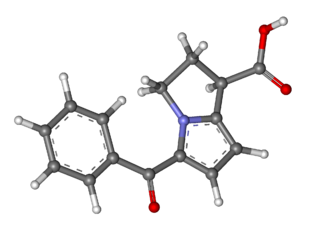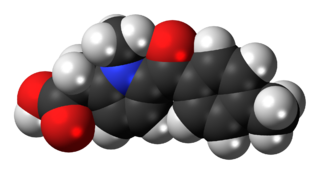 | |
| Clinical data | |
|---|---|
| Trade names | Ansaid, Ocufen, Strepfen |
| Other names | (±)-2-fluoro-α-methyl-(1,1'-biphenyl)-4-acetic acid |
| AHFS/Drugs.com | Monograph |
| MedlinePlus | a687005 |
| Pregnancy category |
|
| Routes of administration | By mouth |
| ATC code | |
| Legal status | |
| Legal status | |
| Pharmacokinetic data | |
| Protein binding | > 99% |
| Metabolism | Liver (CYP2C9) |
| Elimination half-life | 4.7-5.7 hours |
| Excretion | Kidney |
| Identifiers | |
| |
| CAS Number | |
| PubChem CID | |
| IUPHAR/BPS | |
| DrugBank | |
| ChemSpider | |
| UNII | |
| KEGG | |
| ChEBI | |
| ChEMBL | |
| PDB ligand | |
| CompTox Dashboard (EPA) | |
| ECHA InfoCard | 100.023.479 |
| Chemical and physical data | |
| Formula | C15H13FO2 |
| Molar mass | 244.265 g·mol−1 |
| 3D model (JSmol) | |
| Chirality | Racemic mixture |
| Melting point | 117 °C (243 °F) |
| |
| |
| (verify) | |
Flurbiprofen is a member of the phenylalkanoic acid derivative family of nonsteroidal anti-inflammatory drugs (NSAIDs). It is primarily indicated as a pre-operative anti-miotic (in an ophthalmic solution) as well as orally for arthritis or dental pain. Side effects are analogous to those of ibuprofen. [2]
Contents
It was derived from propionic acid by the research arm of Boots UK during the 1960s, a period which also included the discovery of ibuprofen, indometacin, diclofenac, naproxen, ketoprofen, and sulindac. [3] [4] : 34
It was patented in 1964 by Boots UK and approved for medical use in 1987. [5] It was approved in the US in 1988; the first generic was approved in 1994. [6] : 158


















